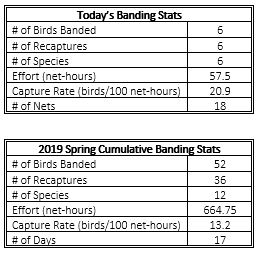Today was our last day of spring banding. Once all the data has been processed I will post the season's totals. What species do you think we captured the most?
Though today was a little slower than the last couple of days, the diversity of species was interesting. We heard several Townsend and Wilson's Warblers, but didn't catch any. We did capture several woodpeckers and enjoyed the opportunity to compare them in the hand. Here's footage from a gorgeous female Downy Woodpecker we caught:














